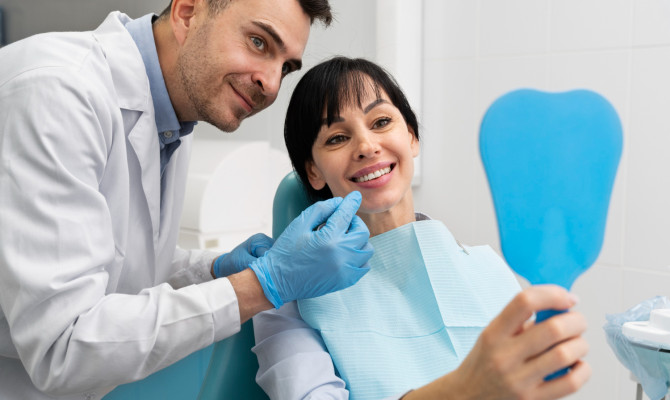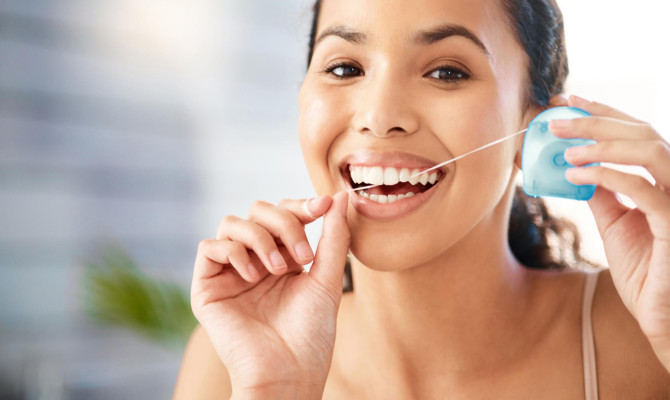Cracked tooth: Causes, Types and Treatment

- Cracked tooth
- 23 Aug 2023
Introduction
What is Cracked tooth?
A cracked tooth is a dental ailment in which the tooth structure has a minor fracture or cracks. This may cause pain on chewing to feel cold or heat. And, if handled, it can occasionally result in infection. If you think you have a cracked tooth, you must visit the dentist immediately.
In this comprehensive article, we set out to learn more about this problem. We strive to arm readers with the knowledge necessary to safeguard their priceless smiles and maintain optimal dental health by delving into the numerous types of cracks, their potential origins, and the crucial need for prompt diagnosis and treatment.

Causes

Causes of Cracked tooth syndrome
- Clenching
- Chewing hard foods
- Cavities
- Trauma
- Age
- Brittle teeth
- Large fillings
- Uneven bite
- Temperature changes
It is a condition called “dental crack lines” with several potential causes. Following are a few of the typical reasons:
Tooth clenching or grinding
- Stress can cause people to grind their teeth or clench their jaws frequently while they sleep, which can put too much pressure on the teeth and eventually cause cracks.
Chewing hard food
- It can stress the teeth and cause cracks if you bite on something hard like ice, heart candies, or unpopped popcorn kernels.
Dental decay
- Untreated cavities damage the tooth’s structure and make it more brittle, especially when exposed to stresses from biting.
Traumatic injury
- Accident falls, and facial blows can all provide rapid, severe force to the teeth.
Age and wear
- Our teeth gradually deteriorate with age, which can result in the formation of microscopic fractures or cracks.
Brittle teeth
- Due to genetic predispositions or underlying medical issues, some persons may have natural teeth.
Large fillings
- Dental fillings placed extensively are more likely to shatter because the felt substance might cause stress spots in the structure.
Uneven bite
- When chewing, forces are distributed unevenly due to an unbalanced bite or improperly aligned teeth, which can result in fissures and trouble spots.
Temperature variations
- The tooth structure may expand and contract due to repeated exposure to extreme temperatures, such as eating hot foods and drinking cold liquids. 5Causes of Cracked tooth | Researched based study from National Institutes of Health 6Causes of Cracked tooth | Researched based study from Canadian Dental Association
Symptoms
Symptoms of Cracked tooth
- Pain
- Sensitivity
- Uncomfortable while biting
- Swollen gums
- Intermittent pain
- Visible cracks
- Pain while having sweets
- Discoloration
The symptoms can change depending on the size and location of the crack. Some typical signs include:
Toothache
- It frequently results in sporadic or ongoing pain, possibly brought on by chewing, biting, or releasing the bite. The damaged tooth may feel the discomfort exclusively or radiate to other teeth nearby.
Sensitivity
- Another indication is an increase in sensitivity to hot or cold temperatures. The piercing, transient pain might be brought on by drinking or eating hot or cold food and liquids.
Uncomfortable when biting
- Biting or chewing can hurt, especially when pressure is applied.
Gums that are swollen
- It may occasionally cause swelling and irritation of the gums nearby.
Intermittent pain
- Since the pain may come and go, it can be challenging to pinpoint the exact source, making a diagnosis problematic.
Visible cracks
- Noticeable fissures or lines may occasionally be present on the tooth’s surface. However, they are sometimes difficult to see with the human eye, exceptionally if they are tiny or hidden beneath the gum line.
Discomfort while having sweet foods
- Consuming certain meals or drinks might cause pain or suffering for some people.
Discoloration
- It might show variations in color from the neighboring teeth. 4Symptoms of Cracked tooth | Researched based study from American Dental Association
Types
Types of Cracked tooth
These many cracked teeth have distinctive traits and potential effects on dental health.
Craze lines
- These minor surface cracks harm the tooth’s outer layer of enamel. Since they are primarily cosmetic, they are typically safe and do not require treatment.
Fractured cusp
- It occurs when a portion of the chewing surface of the tooth breaks off.
- This kind can be fixed with a dental crown and usually doesn’t extend past the gum line.
A broken tooth
- This break penetrates the tooth structure and may even reach the pulp. Depending on the severity of the injury, it may cause pain and sensitivity and necessitate either root canal therapy or extraction.
Split tooth
- When a fractured tooth is not treated, the crack spreads and eventually separates the tooth into several fragments. It can be challenging to save a split tooth, and extraction may be required.
Fracture of the vertical root
- This kind spreads from the tooth’s root to the chewing surface vertically. Since they might be challenging to cure, extraction is frequently necessary. 3Types of Cracked tooth | Researched based study from National Institutes of Health
Diagnosis
Diagnosis of Cracked tooth
A thorough dental examination is necessary to diagnose a cracked tooth, and it may include the following procedures:
Patient history
- The first thing the dentist will do is go over your oral symptoms and any pertinent medical background.
- Provide information regarding the onset, location, and any potential pain triggers.
Clinical evaluation
- The afflicted region will be visually inspected for any cracks or anomalies. So, look for any swelling or redness in the gums that surround the affected area.
X-rays
- They are crucial for locating cracks that cannot be seen with the naked eye, particularly those below the gum line.
Transillumination
- To beam light through the tooth, a trans illumination device, a dental instrument, may be utilized. This method can assist in exposing flaws that might not be readily apparent.
Bite test
- To determine which tooth is the source of the problem, the dentist may ask you to bite down on certain things or apply pressure to particular places.
Dental dyes
- Occasionally, the surface may be painted with a unique dental dye. This may aid in the diagnosis by making tiny cracks more evident.
Cone beam computed tomography (CBCT)
- In rare circumstances, CBCT might be suggested to offer a 3D picture of the tooth and surrounding structures and enable a more thorough evaluation of the crack. 1Diagnosis of Cracked tooth | Researched based study from National Institutes of Health 2Diagnosis of Cracked tooth | Researched based study from National Institutes of Health
Treatment
How is a Cracked tooth treated?
Dental bonding
- Dental bonding can repair microscopic fissures like craze lines or small chips. Or, to restore the afflicted area’s appearance and functionality, tooth-colored resin is applied, molded, and hardened.
Dental crown
- A dental crown might be advised if the crack is more severe.
- It is a specially constructed cap that completely encases the tooth, offering support and protection.
- It restores strength and functioning while preventing the crack from expanding.
Root canal therapy
- This can be required if a crack penetrates the pulp and causes discomfort and possible infection.
- The injured pulp is removed during this surgery, and the canal is cleaned and sealed to stop the spread of the disease.
- Then, a crown is put on top to offer even more support.
Extraction
- Extraction may be the only practical solution if a split tooth is discovered or the break is severe.
- The dentist may review replacement options, including dental implants or bridges, to restore appearance and functionality after extraction.
- If extraction is necessary, implants and Bridges may be considered permanent options for implantation.
- In contrast to bridges, which are made of fake teeth attached to nearby natural teeth, implants are prosthetic dental roots surgically inserted into the mouth.
- Wearing a sleep guard can help prevent fractured teeth brought on by bruxism.
- It is a mouth guard specially made to suit the wearer’s teeth to prevent more cracks from developing while the wearer sleeps. 2Treatment of Cracked tooth | Researched based study from National Institutes of Health
Any feedback on this article?
 This Articles content was accurate
This Articles content was accurate Very Informative Article
Very Informative Article I have a question or a comment
I have a question or a comment
 This article contains inaccurate content
This article contains inaccurate content This article was not helpful
This article was not helpful I have a question or a comment
I have a question or a comment
We appreciate your helpful feedback!
Checkout our social pages
References
-
National Institutes of Health
CBCT Advanced Scan
-
National Institutes of Health
CBCT Advanced Scan | Night Guard Usage
-
National Institutes of Health
Fracture of Vertical Root
-
American Dental Association
Discoloration of tooth
-
National Institutes of Health
Temperature variations of the tooth
-
Canadian Dental Association
Temperature variations of the tooth






































